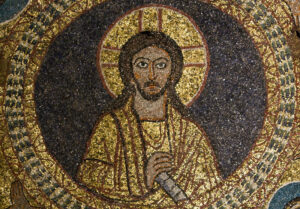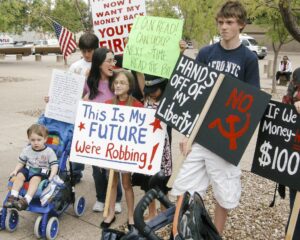George Floyd was arrested on May 25 on the charge of using a counterfeit $20 bill to purchase cigarettes. In eyewitness videos, the arresting officer Derrick Chavuin pins Floyd to the ground, while Floyd is handcuffed. Chauvin is seemingly relaxed as he kneels on Floyd’s neck. Chauvin calmly placed his hands inside his pocket, his arms akimbo and the starched epaulettes of his uniform standing at attention. The other officers gaze upon Floyd and Chauvin as if it was a sporting event. Floyd is seen on video pleading “I can’t breathe, please help.” He later called for his mother. Eight minutes, 46 seconds later, Floyd was dead.
The symbolism of a white officer on the neck of a Black man represents the weight of racism that many African Americans and people of color experience in this country. A few weeks earlier, video footage of Ahmaud Arbery being killed by white vigilantes while jogging in a Georgia suburb was released. On March 13, Breonna Taylor, an African American woman, was killed by police who were searching for a suspect in the wrong home.
Despite the condemnation by Minneapolis Mayor Jacob Frey and St. Paul Mayor Melvin Carter (Minneapolis and St.Paul are adjacent but separate municipalities known as the Twin Cities), the firing of the officers involved and the charging of Chauvin with third degree murder, protests erupted in Minneapolis on May 26. Across social media, millions witnessed police shoot teargas into peaceful crowds. Protests continued, and on May 27, a Minneapolis-headquartered popular superstore, Target, was burned to the ground. A day later, police were chased out of St. Paul’s 3rd Precinct (where the officers involved in the murder of Floyd were assigned), before it was set ablaze. Two days later, like dominoes, demonstrations happened in Chicago, New York, Los Angeles, Atlanta, the San Francisco Bay Area, and many smaller cities and towns across the country.
The amazing fact, perhaps, is that protests would even take place. In the midst of the COVID-19 pandemic that has claimed more than 100,000 American lives, protesting in large groups brings with it a risk of infection. But it was a risk many were willing to take to express their anger at the sense of abandonment and grief as the pandemic rages on. Indeed, a months-long quarantine, an unemployment rate of nearly 20% and rising, and the string of horrific police violence against Black Americans has climaxed in unimaginable frustration.
For African Americans the situation is worse. The unemployment rate among African Americans, even in “normal” times, is 25% (three times the national average). In New York, police officers made at least 120 arrests and issued nearly 500 summonses for social-distancing violations between March 16 and May 5. Of those arrested, 68% were Black and 24% were Latino.
And according to the COVID Racial Tracker, African-American deaths from COVID-19 are nearly two times greater than would be expected based on their share of the population. As the popular saying goes, “When America gets a cold, Black America gets the flu.”
The reaction from the White House to the protests have been mercurial. Upon the release of the video showing Floyd’s killing, Trump expressed anger at the officers and in later days called for a federal civil rights investigation. But as the scale and scope of the protests grew, Trump played his familiar card of appealing to his far-right white base. He has called for looters to be shot, blamed the mainstream media for the protests, and called outside agitators and antifa “terrorists.”
The demonstrations came out of a local organizing tradition in Minnesota. In the 1960s groups like the Soul Patrol and the American Indian Movement organized community patrols against police brutality. In 2015, the Black Lives Matter Movement led an 18-day occupation and protest against the police killing of Jamar Clark, a young African American man in Minneapolis. And in 2016, protests happened in St. Paul following the killing of Philando Castile, a beloved cafeteria worker, by the police. Castile’s murder was in front of his daughter and girlfriend, who live streamed the aftermath of the shooting on Facebook.
The current wave of protest in the Twin Cities has been sustained by broad local support. Members of the American Transit Union refused to transport arrested demonstrators on city buses, and similar solidarity actions have been carried out by Transit Workers Local 100 in New York City. Members of Minneapolis’ large Somali community have participated in the demonstrations, building solidarity with African Americans. And during the demonstrations, local mutual aid groups have organized free kitchens to feed protesters and the community. Local bail funds have been set up to bail out jailed protesters, allowing for people from across the country to support local struggles.
The reliance on mutual aid and direct action, with a clear racial justice message echoes the lessons learned through Occupy Wall Street, Black Lives Matter, and Idle No More. The calls for mass demonstrations are issued on Twitter and Facebook, with seemingly no group taking leadership. This formless, leaderless organizational style has the advantage of being loose enough to allow people to participate without feeling the weight of a political line. On the other hand, it has resulted in some visible arguments over tactics.
As part of their ongoing policy platform, groups like the Movement for Black Lives have called for the defunding of the police. This call reflects the influence of prison abolitionists such as Angela Davis, Mariame Kaba, and Ruth Wilson Gilmore who understood that police and jails cannot be the default in solving the social problems of poverty, lack of healthcare and ill-equipped schools. Similar to the calls of a “peace budget” from the Pentagon in the 1970s and 1980s, funds from police departments would go toward public safety initiatives such as expanding social workers, support for victims of gender based violence, and a stronger social safety net. Given the current austerity budgets that are in place due to the economic fallout from COVID-19, as well as the overall militarization of police, these calls have gained traction. According to a recent article in The Appeal, “Communities that are safest don’t have the most police, they have the most resources.”
The calls to defund the police have disrupted discourses on political responses to COVID-19 and whiteness as an identity and ideology. Indeed, in recent weeks, we have seen two critical responses to the pandemic. On the one hand, Trump’s revanchist rhetoric spurned a far-right backlash against local ordinances on quarantining. The sight of armed militias attempting to storm state houses rested in a particular logic of “survival of the fittest” and a “us vs. them” mentality.
During the protests, however, a new sense of solidarity formed. The protests have been largely young and multiracial. Many white people have seen their roles as “allies” seeking to support Black people, including standing between African Americans and the police. This solidarity reflects the history of the past ten years when a similar coalition elected the country’s first Black president. The question is whether or not this coalition can build, in the aftermath of these protests, the type of political demands that are rooted in so much of their hurt: guaranteed jobs, a Green New Deal and healthcare for all.
It also holds the question of whether or not this could be a moment to reset US history. James Baldwin noted, “Black had been described to me as the absence of light, it became very clear to me that if this were true, we would never have been able to see the colour, black: the light is trapped in it and struggles upwards.”
After darkness, the rainbow.
Kazembe Balagun is editor for race and class at The Bias Magazine. He is Project Manager with the Rosa Luxemburg Stiftung in New York.
This article originally appeared at the Rosa Luxemburg Stiftung blog.




